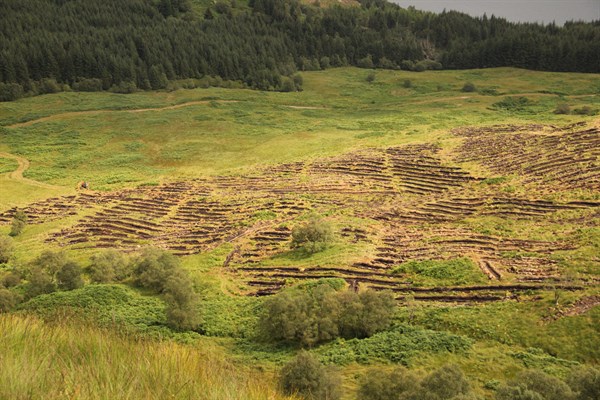We can now see the wood for the trees
Andrew Heald, Confor Technical Director, argues that the sins of the past are behind us

When critics of forestry get into their stride, a mention of the Flow Country is never far away.
So I always try to get there first and tell them that yes, foresters at the time got it wrong, in some cases very wrong, but we haven't done anything like that for more than 30 years.
Forestry is a long-term business and the sins of past policy and practice are very much visited on us today. Those creations of the 1970s and 1980s are what people see in our landscapes now, but the way we plant and manage forests is very different today.
That's not just a message for the forestry sector and policy-makers, it's one we are taking out to a wide range of people and organisations. A recent visit to Whitehillshiel in the Borders was part of this process of open discussions "on the ground", showing environmental organisations including the RSPB, John Muir Trust and Scottish Wildlife Trust that forestry has a very modern face, embracing a wide range of environmental, economic and social benefits.
I am often struck by how much common ground exists between forestry and environmental groups, but so much gets lost in misconceptions and simple vocabulary - "blanket afforestation", "wall-to-wall" and so on.
I'm certain we can increase trust and understanding of each other's position by starting an open, honest dialogue about what we want.
If we do this and find where our objectives overlap, we can do great things.
At Whitehillshiel, managed by Scottish Woodlands. we talked about the balance between forestry and farming, peat and breeding birds, changes of land use, water management and much more. I stressed that the majority of Scottish timber is used in construction, and there is a growing demand for domestic timber, with recent multi-million pound investments in local sawmills.
Jonnie Hughes, chief executive of the Scottish Wildlife Trust, was interested in the role that modern, mixed forestry might play in the National Ecological Framework. Andrew Panter of Scottish Natural Heritage recognised it's not just about planting a new forest, but creating a whole new landscape.
Vicky Swales of RSPB Scotland stressed the importance of conducting an environmental impact asessment and finding out what bird species (and wildlife more generally) is present on a site before pressing ahead. This was an issue in the creation of Scotland's largest current woodland creation project in Clackmannanshire, where the outer edges of the forest were specifically designed to encourage black grouse populations back into the area.
Hugh Chalmers of the Tweed Forum saw restructuring last century's forests as a great opportunity to improve water management, although he noted this doesn't always happen. He stressed the need for a thorough understanding of the relationship between forestry and water at a landscape level, including wetland habitats, water quality, ground preparation, ditch design and the impact of woody debris. Confor was involved in a document called The Role of Productive Woodlands in Water Management, published earlier this year, which examines many of these issues, and showed how productive forestry can have a positive impact, particularly in reducing flooding.
My aim for the Borders forest visit was to begin a dialogue, which I think we did, and hopefully by developing that dialogue it can lead to more understanding, more trust - and better decision-making in our mutual interest.
There is much to do. Forestry needs to work harder to make sure professionals embrace design and consultation skills more fully, not just the technical skills of woodland creation.
In particular we need to demonstrate the social benefits of forestry, in terms of employment and delivering sustainable construction materials for house building, whilst reducing our dependence on imported forest products
To go back to where I started, huge monoculture forests are history; 2015 is about modern, mixed forests which also deliver for biodiversity, employment, climate change, water management and much more.
